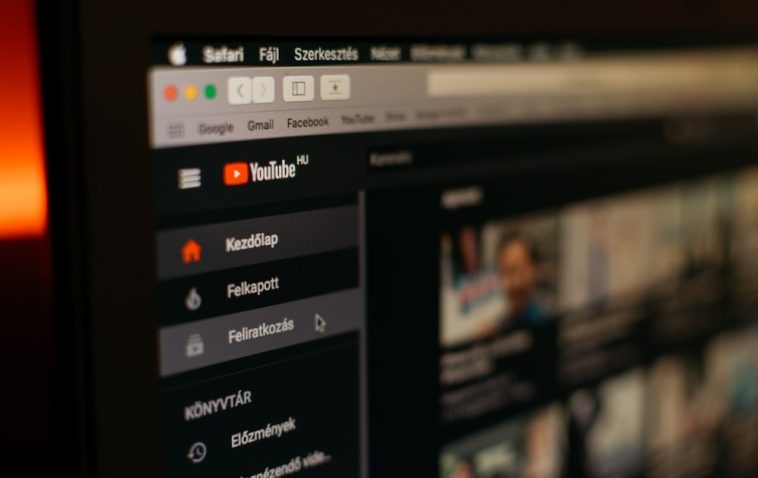Introduction.
Creating content for YouTube isn’t just about shooting and uploading a video. There’s a lot that goes on behind the scenes – brainstorming ideas, scripting, refining topics, understanding your audience, and making sure everything flows well from start to finish. And let’s be real, doing all of that on your own can feel overwhelming.
But here’s the good news: AI tools, especially ChatGPT, have made a huge impact on how content creators work, making it easier to create videos that are engaging, well-structured, and catered to viewers’ interests.
So, why should anyone consider using ChatGPT for YouTube content creation? Simply put, it saves time, boosts creativity, and helps take ideas to the next level.
With ChatGPT, it’s possible to quickly generate ideas, write scripts, develop titles, and even come up with interesting questions to interact with viewers.
And you don’t need to be a tech whiz or have any coding skills to make the most out of it.
Let’s walk through everything that makes ChatGPT a powerful ally for YouTube content creators. I’ll go over the benefits, some of the downsides to consider, a few real-life examples of what ChatGPT can help with, and a handy FAQ to answer any lingering questions.
By the end, you’ll have a solid understanding of how to integrate ChatGPT into your content creation process.
Why ChatGPT Is Great for YouTube Content Creation
When it comes to YouTube, content is king, but consistency is key. Whether you’re running a small personal channel or managing a high-volume, multi-topic channel, the pressure to come up with new ideas and execute them effectively can be intense. ChatGPT can help in a variety of ways:
- Idea Generation: Sometimes, coming up with fresh video ideas is the hardest part. ChatGPT can generate a list of ideas based on any prompt you provide, giving you new angles to explore.
- Script Writing: Need help with your script? ChatGPT can outline your video and even provide a full draft, allowing you to tweak or add personal touches instead of starting from scratch.
- Video Titles and Descriptions: Crafting catchy titles and accurate descriptions can be tricky, but ChatGPT can help create engaging, SEO-friendly options that attract viewers.
- Audience Engagement: ChatGPT can generate questions to ask your audience, encouraging more comments and interaction on your videos, which helps build a stronger community and improves your video’s ranking.
- Brainstorming for Thumbnails: While AI can’t create thumbnails yet, ChatGPT can suggest eye-catching thumbnail ideas based on what’s popular or effective in your niche.
Pros and Cons of Using ChatGPT for YouTube Content
Let’s take a look at some of the upsides and downsides of incorporating ChatGPT into your YouTube workflow.
Pros:
- Time-Saving: You can cut down on hours spent brainstorming and scripting.
- Creative Boost: When you’re stuck, ChatGPT can give you fresh ideas or new ways to approach a topic.
- Consistency: Maintaining a regular upload schedule becomes easier with help in creating scripts, descriptions, and engagement ideas.
- Improved SEO: By suggesting keywords, title structures, and trending topics, ChatGPT can help improve the chances of your video reaching a wider audience.
- Low Cost: Compared to hiring a scriptwriter or a consultant, using ChatGPT is much more budget-friendly.
Cons:
- Generic Suggestions: Sometimes, AI-generated content can lack a personal touch. It’s important to add your personality and style.
- Content Limitations: ChatGPT doesn’t know your unique experiences, so while it can write about broad topics, it might not capture niche specifics as well as you could.
- Limited Visual Help: ChatGPT isn’t able to create visual assets or actual video edits, so for thumbnails, video graphics, and editing, you’ll still need to use other tools.
How Do I Use ChatGPT for Different Parts of YouTube Content Creation?
Let’s break down how ChatGPT can specifically help in different stages of creating YouTube content.
1. Brainstorming and Topic Research.
Start by giving ChatGPT some information about your channel’s niche, audience, or recent trends.
For example, if you have a fitness channel, ask for video ideas that focus on at-home workouts, nutrition tips, or new fitness trends.
ChatGPT can give you a list of topics, along with potential subtopics, so you can choose what best fits your channel.
2. Scriptwriting
Writing a script can be time-consuming, especially if you’re aiming for a conversational tone. Try prompting ChatGPT with a detailed idea or an outline of your video.
For example, you could say, “Write a script outline for a 10-minute video about the benefits of meditation for beginners.” ChatGPT will provide you with a draft that you can customize and edit.
3. Crafting Titles, Descriptions, and Tags.
Effective titles and descriptions can make a huge difference in how well a video performs. To generate title ideas, tell ChatGPT about the main point of your video, and it’ll provide you with options that are catchy and SEO-optimized.
For descriptions, ChatGPT can write something that summarizes your content while subtly including keywords, making it easier for your video to appear in search results.
4. Enhancing Audience Engagement.
Engaging with viewers can improve your channel’s growth and loyalty. Ask ChatGPT to suggest questions you can ask your audience, prompts for polls, or even ideas for giveaways.
For example, if you’re posting a tech review, ChatGPT can help you come up with questions like, “Which features do you look for most in a smartphone?” This keeps the conversation going in the comments.
5. Thumbnail Ideas.
Although ChatGPT can’t create visuals, it can help brainstorm concepts. If you’re making a travel vlog, for instance, ask ChatGPT what kind of colors, text, or images might attract viewers for your type of video. You’ll still have to design the thumbnail, but ChatGPT’s input can spark ideas on how to make it visually appealing.
Frequently Asked Questions
Q: Can ChatGPT completely replace human input in YouTube content creation?
A: Not exactly. ChatGPT is great for generating ideas, structuring scripts, and optimizing your content. However, adding your personality and experiences is still crucial to creating authentic and engaging videos.
Q: Is ChatGPT free to use?
A: ChatGPT offers both free and paid versions. The free version has certain usage limits, but the premium subscription (ChatGPT Plus) provides access to GPT-4, which is more powerful and useful for complex tasks like scripting and research.
Q: Will using ChatGPT make my content sound robotic?
A: Not if you tweak the output to match your style. ChatGPT’s content is meant to be a base you can customize. You can make it sound natural and relatable by adding your voice, anecdotes, or specific insights.
Q: Can ChatGPT help with SEO for my videos?
A: Yes, ChatGPT can suggest keywords, titles, and descriptions that are SEO-friendly. However, staying up-to-date on YouTube’s algorithms and using dedicated SEO tools like TubeBuddy or VidIQ can help maximize your reach.
Q: How long does it take to get used to using ChatGPT?
A: ChatGPT is very user-friendly, so you can start seeing benefits almost immediately. The more specific and clear your prompts, the better the output will be, so there might be a small learning curve in crafting prompts that give you exactly what you need.
Conclusion.
Using ChatGPT for YouTube content creation can simplify a lot of the heavy lifting that goes into running a successful channel.
From generating ideas to writing scripts and optimizing titles, ChatGPT is like a creative partner that saves time and helps you stay consistent.
There are some limitations to keep in mind, like the need to add your unique touch and adjust the AI’s suggestions to better suit your voice.
But overall, it’s a powerful tool that can make the process of creating YouTube videos much easier.
So, ready to give ChatGPT a try and see how it can transform your content? What’s the first part of your YouTube process where you’d love a little AI support?





GIPHY App Key not set. Please check settings